A modular desk element designed for plant integration
2025
Case Study
Furniture
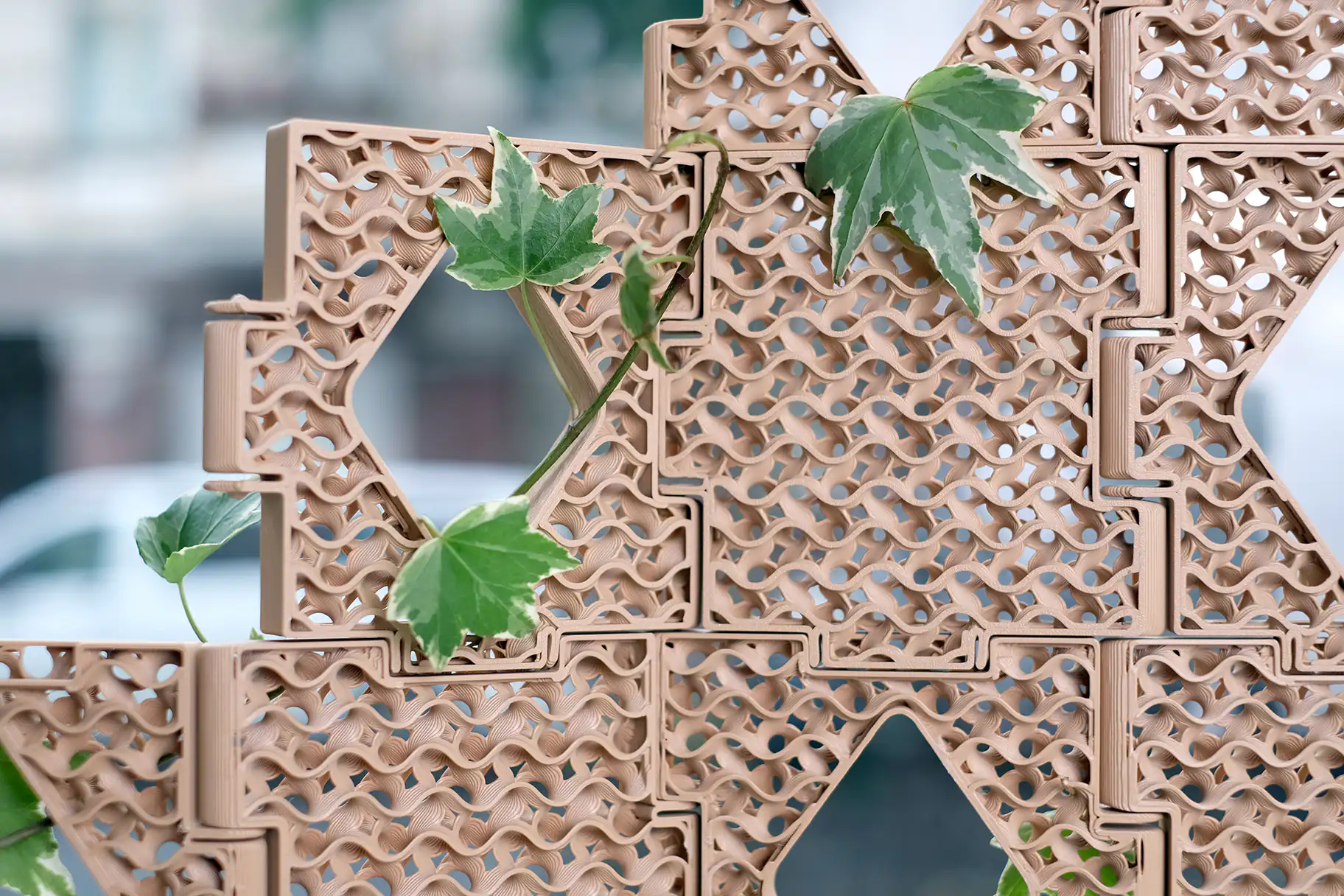

Featuring a continuous 3D lattice structure inspired by natural forms like gyroid and minimal surfaces, it offers a breathable, organic framework that encourages ivy and other vines to climb, weave, and thrive. Both functional and biophilic, it defines space while introducing greenery and softness to interior environments. Ideal for home, studio, or office settings where structure meets nature.
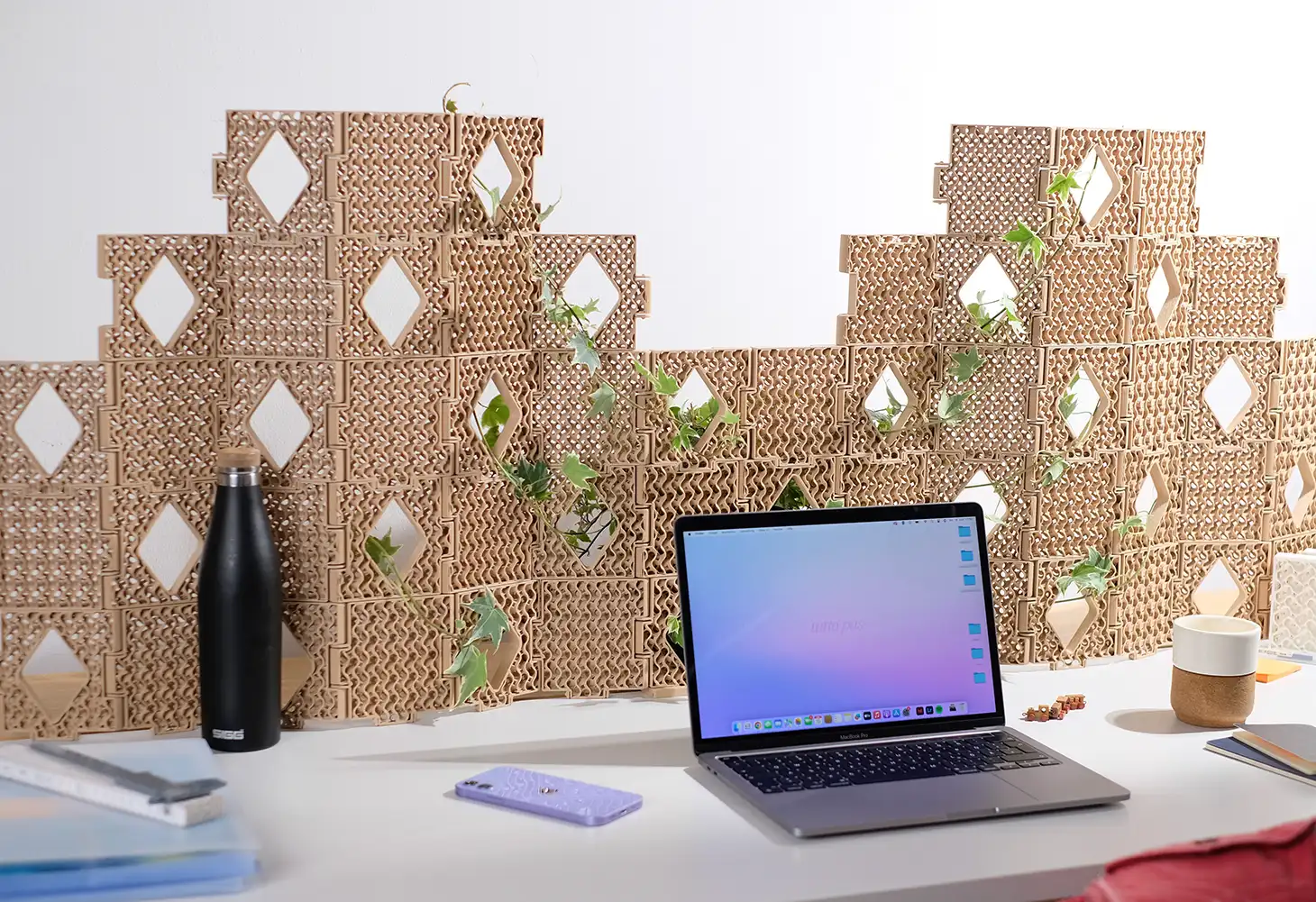

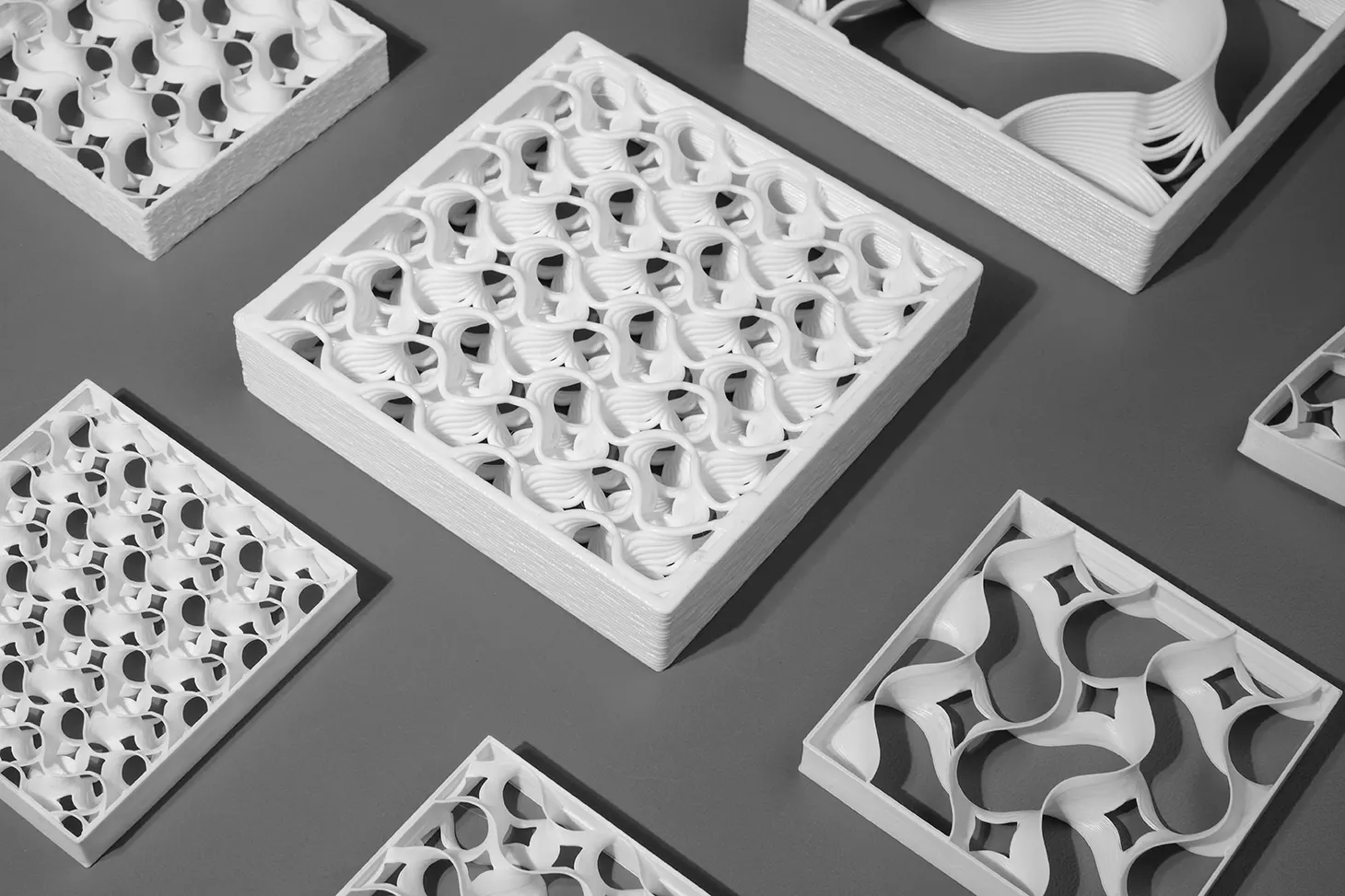
Rooted in the beauty and complexity of the gyroid, this modular desk element is an exploration of how generative geometry can support natural systems. Originally sparked by the shifting visual qualities of gyroid structures - how they transform with changes in density, layer height or angle of perspective - the project grew into a study of form, function, and living integration.
The integration of plants extends the logic of the structure - geometry shaped to invite growth. As climbing forms interact with the surface, the divider evolves from static object to living framework. It becomes a system in flux, defined as much by its material as by the life it supports.
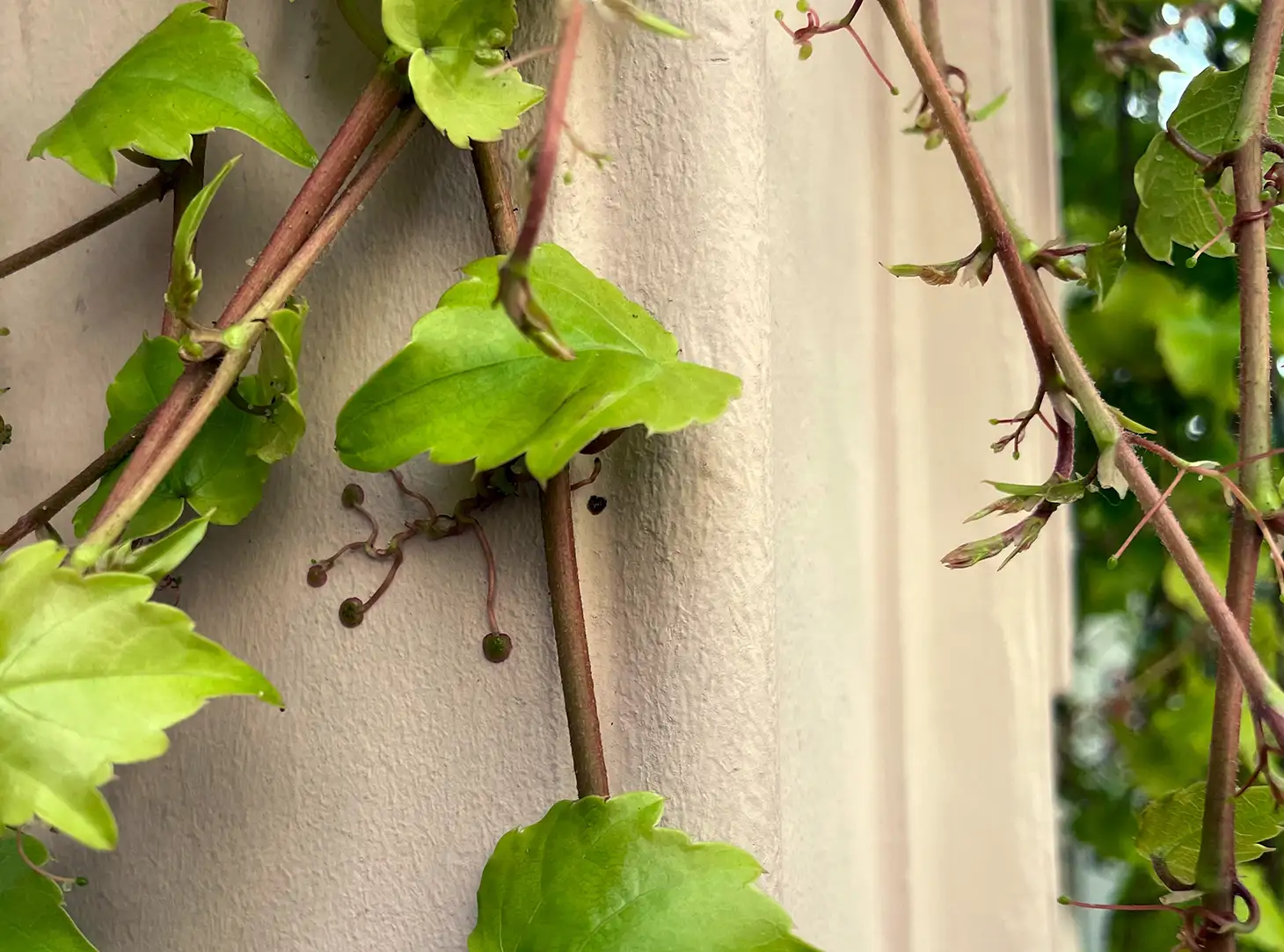
Designed specifically with indoor climbing plants in mind, the structure supports the two most common types:
The gyroid's dense yet open framework offers ideal complexity for both to climb, weave, and thrive, without enforcing a fixed plant type or pattern of growth.
3D-printed using a continuous gyroid infill, each tile eliminates top and bottom layers to reveal a breathable, porous interior. This open structure isn't just visual - it allows roots and tendrils to reach into the volume, while also supporting airflow and natural light flow. The larger openings are distributed across the surface to offer anchor points for sucker-based climbers.
For indoor use, PLA is chosen for its porosity and tactile surface.
For outdoor or more humid environments, PETG is recommended due to its durability and moisture resistance.

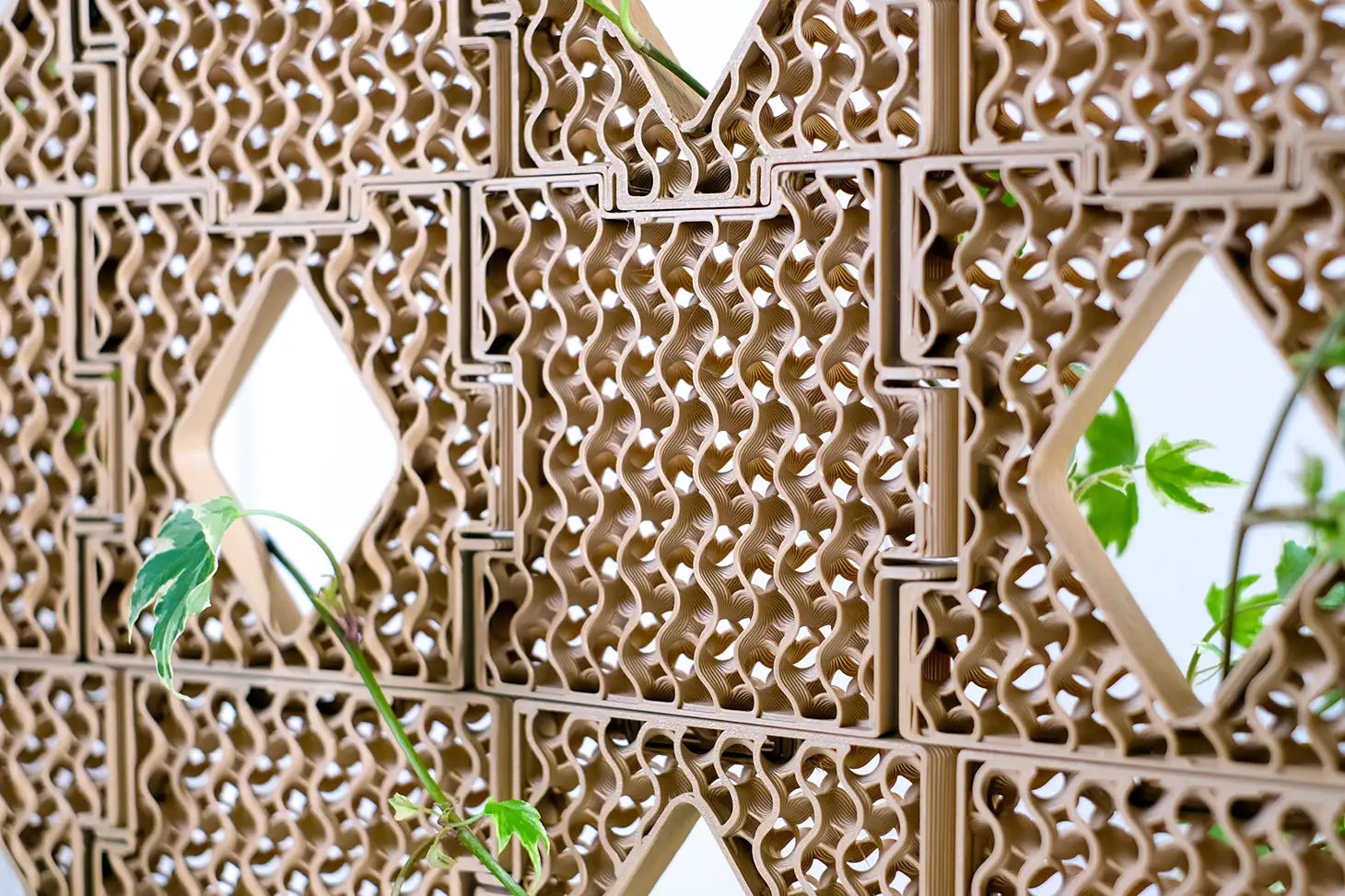

The modules are joined through two distinct snap-fit mechanisms, designed for both flexibility and precision. Horizontally, rounded joints allow each element to pivot up to 90 degrees in both directions, enabling dynamic configurations and soft spatial transitions. Vertically, square snap-fits provide a fixed connection, occupying only half the depth to remain partially concealed, resulting in a clean, continuous edge along the top.
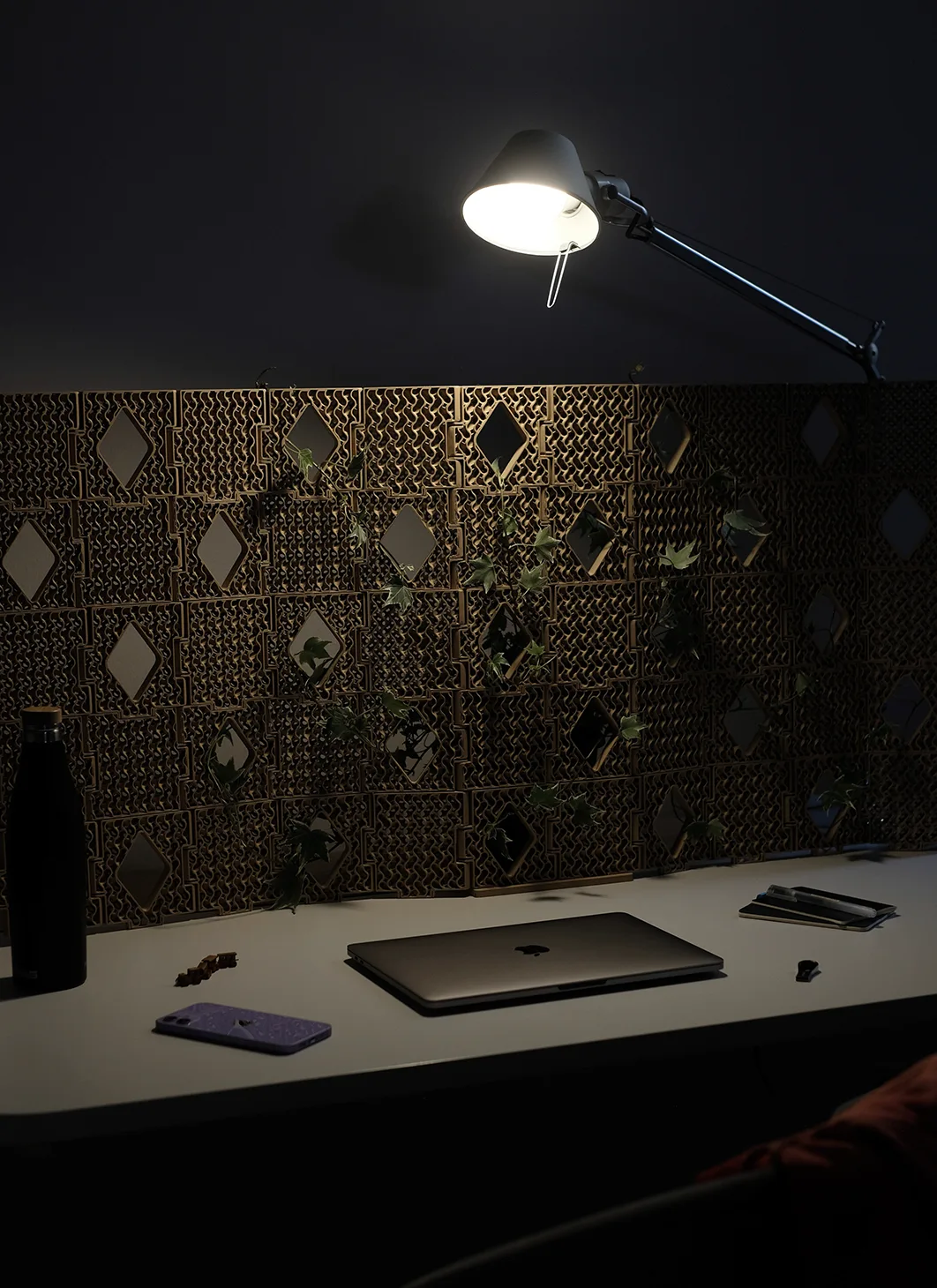
The structure functions as a freestanding modular system with integrated hinge points. This allows for subtle adjustments in shape, encouraging custom configurations in home offices, studios, or shared workspaces. Whether used to define space or soften its edges with greenery, it adapts easily to changing needs.
While designed as a desk divider, its modularity opens possibilities for creative re-use: vertical installations, room dividers, or evolving green sculptures.
Alexandra Marie Carman
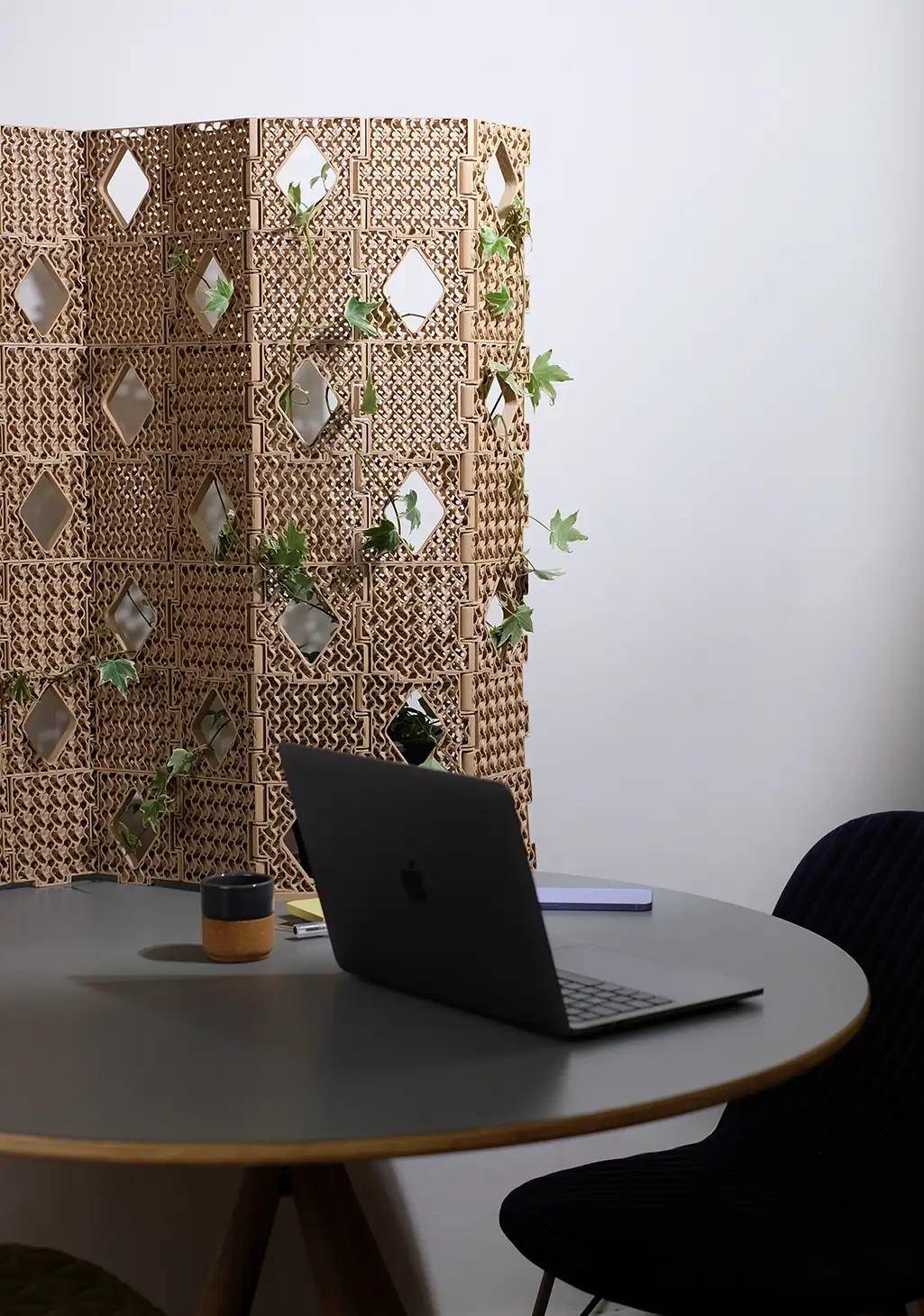
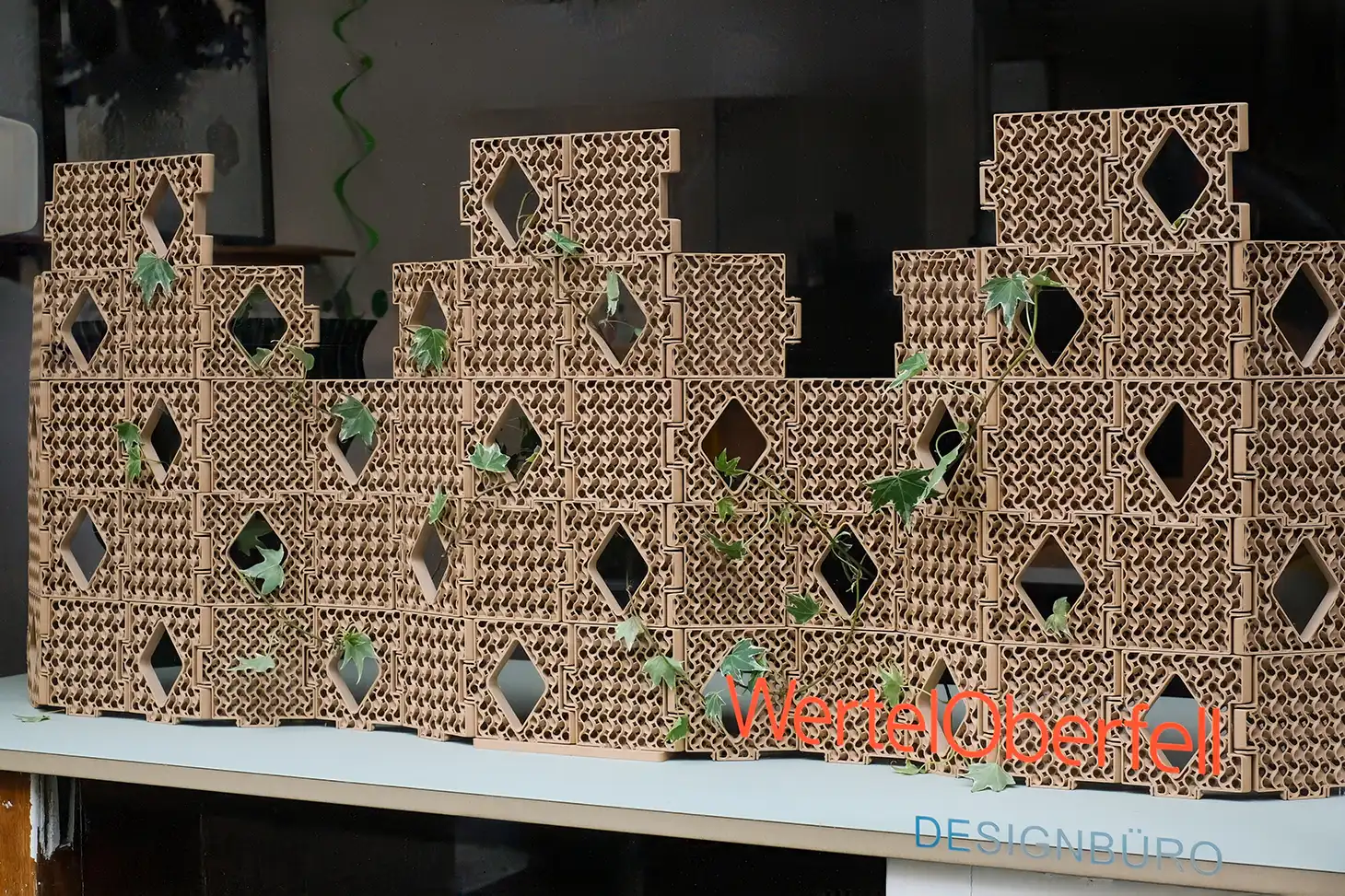
This project was developed together with Alexandra Marie Carman as an Applied Research Project during her internship.